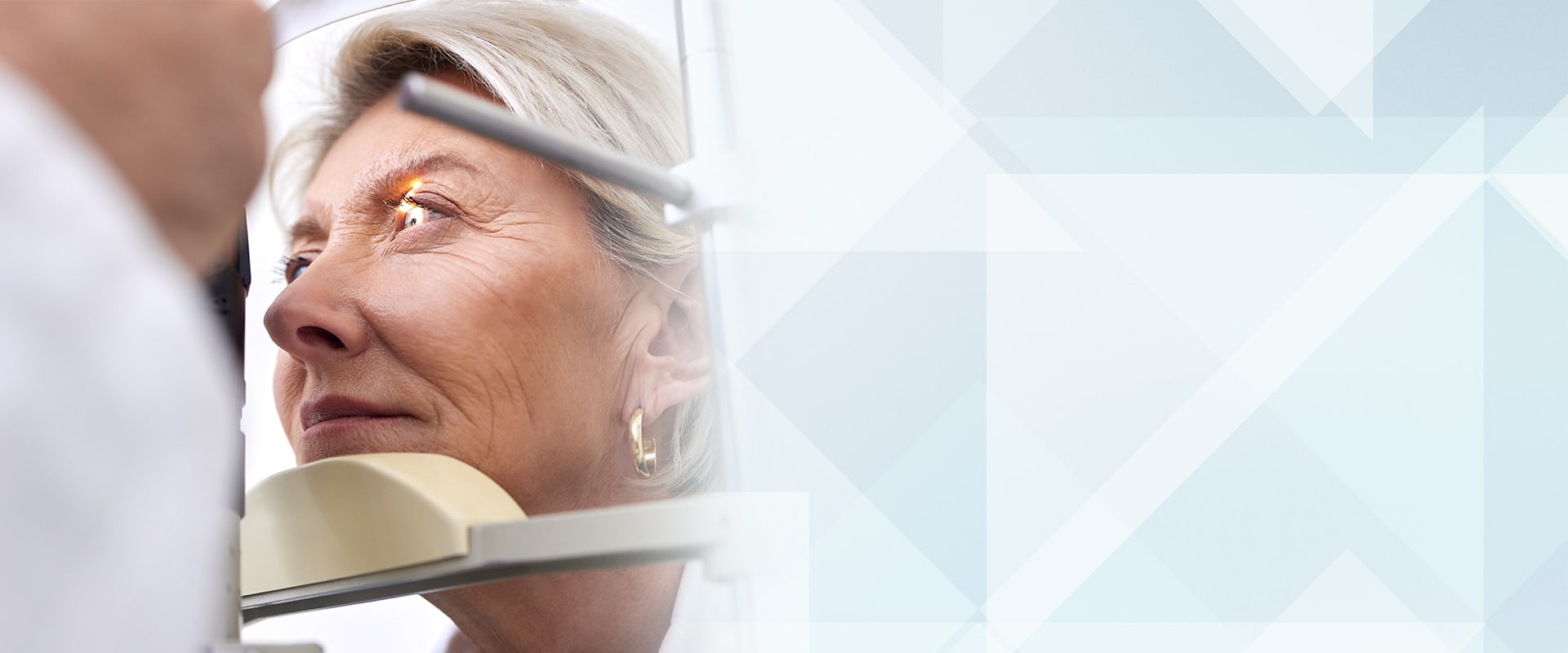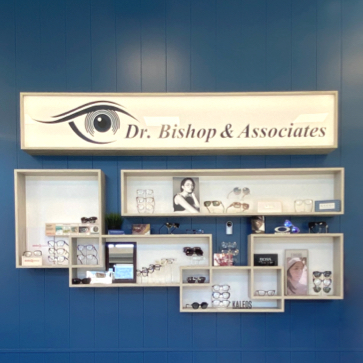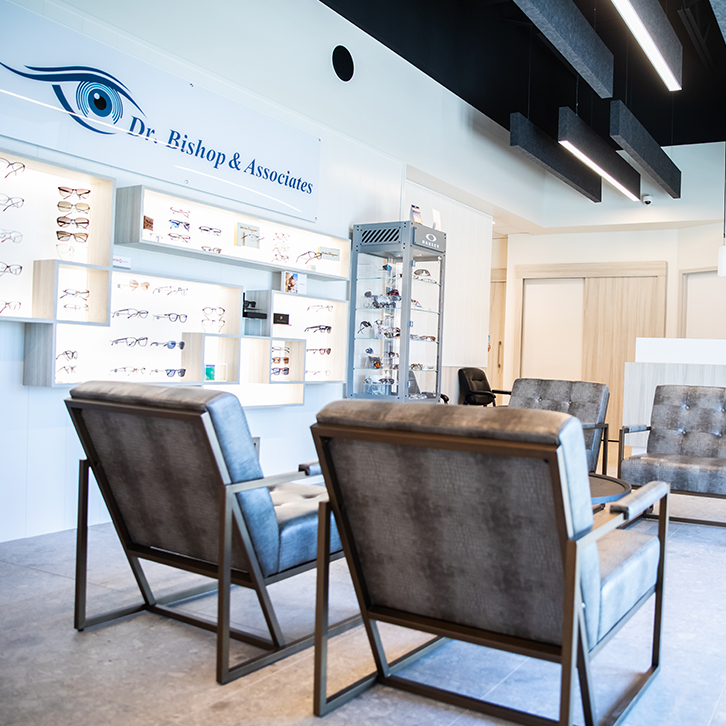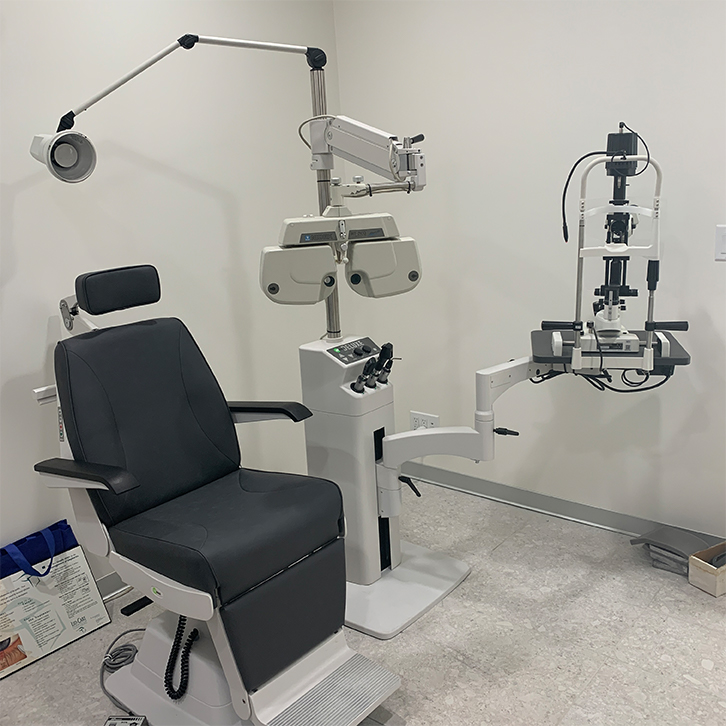Protecting Your Eye Health
When you’ve got a sore throat, fever, or runny nose, you know it’s time to go to the doctor. Usually, your body gives you some sort of indication that it’s sick. However, many eye conditions develop without obvious symptoms, making it difficult to monitor your eye health.
At Dr. Bishop & Associates, we go beyond checking your vision. Annual eye exams are essential for maintaining overall eye health, allowing us to detect early signs of eye diseases and conditions.
With our tools and experience, we create personalized treatment plans tailored to your specific needs. Contact us to schedule your next appointment today.

Ocular Nutraceuticals & Eye Health
Your diet can have a significant impact on your eye health. Certain nutrients, such as vitamin C and zinc, may reduce your risk of macular degeneration and other serious eye diseases.
Dr. Bishop & Associates carries many ocular nutraceuticals to supplement your diet and help maintain your eye health. Ask our knowledgable staff which ocular nutraceuticals might benefit you most.
Early Diagnosis Through Quality Equipment
We work hard to stay at the forefront of eye care technology. As a result, our offices are fully-equipped with diagnostic tools and instruments.
In fact, we were the first optometry clinic in Canada to feauture the Zeiss Cirrus 5000 with Angioplex, and now we even have 4 OCT-A devices to prioritize care.
Here’s a rundown of a few technologies you’ll likely come across when visiting us for a comprehensive exam.
The Zeiss Cirrus 5000 with Angioplex is a noninvasive, dye-free imaging technology. The quick, high-resolution scan allows our optometrists to visualize vascular and structural information. As a result, we can see tiny details for a more accurate look at changes in your eye health.
Fundus autofluorescence (FAF) is another type of noninvasive imaging that allows us to screen for diseases and conditions like macular degeneration and retinal dystrophies. FAF involves shining blue light onto the retina, triggering a natural fluorescent glow from retinal cells.
Optical coherence tomography angiography (OCTA) allows us to examine the anatomical structure of the eye, particularly the structure of tiny blood vessels and capillaries. Noninvasive imaging is helpful in tracking changes to your eye health, especially in macular degeneration, diabetic eye disease, and glaucoma.
Common Eye Diseases & Conditions
Your eye care and vision needs are unique, and our optometrists are passionate about eye care. Eye doctors and ocular specialists are familiar with what eye diseases and conditions have in common.
Their knowledge and dedication give them insight into how common conditions can affect your unique eyes.
No matter what your eye health needs are, we can work with you to get to the bottom of your symptoms and develop a management plan that works for you.
Diabetes causes excessively high sugar levels in the blood, which can damage blood vessel walls. These damaged vessels can become leaky and ineffective in bringing oxygen to parts of the retina, which can lead to many potential ocular complications, including retinal damage, glaucoma, cataracts, and other vision problems.
Glaucoma is an eye disease that damages the peripheral retina and, therefore, peripheral (side) vision. This damage usually occurs slowly over a long period, although one type of glaucoma, acute angle closure, can develop very suddenly.
Glaucoma typically does not exhibit any noticeable symptoms. In most cases, the resulting vision loss is so gradual that the patient doesn’t know until they’ve already lost a significant portion of their sight.
Called “the silent thief of sight,” glaucoma is the leading cause of blindness in Canada.
The macula is a small light-sensitive group of cells in the middle of the retina responsible for detailed central vision. When deposits called drusen form underneath the retina, it can disrupt tissue positioning and prevent effective oxygen transmission to the retina. Once oxygen levels drop low enough, the body can respond in one of 2 ways:
- The retinal tissue dies (dry form)
- New blood vessels push into the retina (wet form)
Both forms cause significant damage to central vision, impacting your ability to read and see faces.
Symptoms of macular degeneration or age-related macular degeneration (AMD) can include:
- Blurry vision
- Dark spots
- Lines appearing distorted or wavy
As you age, the proteins in your eyes’ natural lens restructure into a cloudy film called a cataract. In the short term, cataracts can be treated with strong eyeglass prescriptions.
Once cataracts become too opaque to see through, the eye’s natural lens can be surgically removed and replaced with an implant to restore clear vision. The surgery typically takes less than 15 minutes per eye and is one of the most common surgeries in modern medicine.
Typical symptoms of cataracts include:
- Blurry vision
- Poor colour vision
- Light sensitivity
- Decreased night vision
- Glare or halos around lights
- Feeling or seeing a film over your eye
When abnormal material congregates in the front transparent layer of the eye, also known as the cornea, it’s called corneal dystrophy.
Corneal dystrophies are genetic and, in some cases, tend to get progressively worse. Although some patients don’t experience any symptoms due to corneal dystrophy, others suffer from impaired vision.
Retinal dystrophy refers to various conditions that negatively affect the retina (the light-sensitive tissue at the back of the eye). These conditions are genetic, usually occur in both eyes, and typically result in deteriorating vision.
Tumours and cancers occur when the body starts developing irregular or excess cells. There are 2 main types of eye cancers:
- Primary intraocular cancers that begin in the eye.
- Secondary intraocular cancers that develop elsewhere in the body and eventually spread to the eye.

Learn More About Protecting Your Eyes
Talk to your eye care team about the best ways to protect and preserve your vision for the long term.
At Dr. Bishop & Associates, we’re dedicated to supporting your eye health at every stage of life. Whether it’s preventive care, treatment for existing conditions, or personalized advice, we’re here to help you achieve and maintain your visual health goals. Book an appointment with us today and take the first step toward healthier eyes.
Why Trust Us? We’re Advocates for Eye Health & Vision Needs
Dr. Bishop & Associates is committed to providing care that can make a positive difference in your life.

Dry Eye Clinic
Dealing with scratchy, red, tired eyes can be frustrating—but we’re here to help. At our dry eye clinic, we take a comprehensive approach to diagnosing and managing dry eye, focusing on your unique symptoms and lifestyle. We aim to address the root cause to achieve long-lasting relief, including innovative treatments with noninvasive IPL and radiofrequency technology.

BEAUTIFY @ Dr. Bishop’s
We want you to feel confident in your skin. Our aesthetic services are designed to help renew and replenish your skin with minimally invasive treatments and no downtime. With AlumierMD skincare and IPL, radiofrequency, and laser rejuvenation technology, we’ll work with you to create a personalized plan to address your skin concerns and reveal your natural beauty.

Myopia Management
Nearsightedness (myopia) is on the rise, and it can have long-lasting impacts on your child, from their success in the classroom to their eye health later in life. Myopia management is a personalized, proactive approach to slowing myopia progression to help support your child’s sight today and protect their long-term eye health. Your child’s vision is our top priority.

Where to find us
Willow Park Village

Our Address
- 575 – 10816 Macleod Trail SE
- Calgary, AB T2J 5N8
Contact Information
- Phone: (403) 974-3937
- Fax: 403-509-4859
Our Hours
Legacy Township

Our Address
- 230 – 200 Hartell Way SE
- Calgary, AB T2X 4S9
Contact Information
- Phone: (403) 974-3937
- Fax: 587-392-7365
Our Hours
Beacon Hill

Our Address
- 615 – 11877 Sarcee Trail NW
- Calgary, AB T3R 1W5
Contact Information
- Phone: (403) 974-3937
- Fax: 403-509-4854
Our Hours
Northgate Village

Our Address
- 103 – 495 36 St NE
- Calgary, AB T2A 6K3
Contact Information
- Phone: (403) 974-3937
- Fax: 403-509-4866
Our Hours
Our Eyewear Brands

- Ray Ban
- Tom Ford
- Zeiss
- Kate Spade
- Oakley
- Gucci
- Maui Jim
- Fossil
- Saint Laurent
- Calvin Klein
- David Beckham
- L.A.M.B.
- Fossil
- Ray Ban
- Tom Ford
- Zeiss
- Kate Spade
- Oakley
- Gucci
- Maui Jim
- Saint Laurent
- Calvin Klein
- David Beckham
- L.A.M.B.

Virtual Try-On: Effortlessly Sample Your New Look
Ready to find your perfect pair? Try on our wide range of glasses and sunglasses virtually!
Explore styles available at all our Calgary eye clinic locations.
Dr. Bishop & Associates is here to help you see the world in style.








